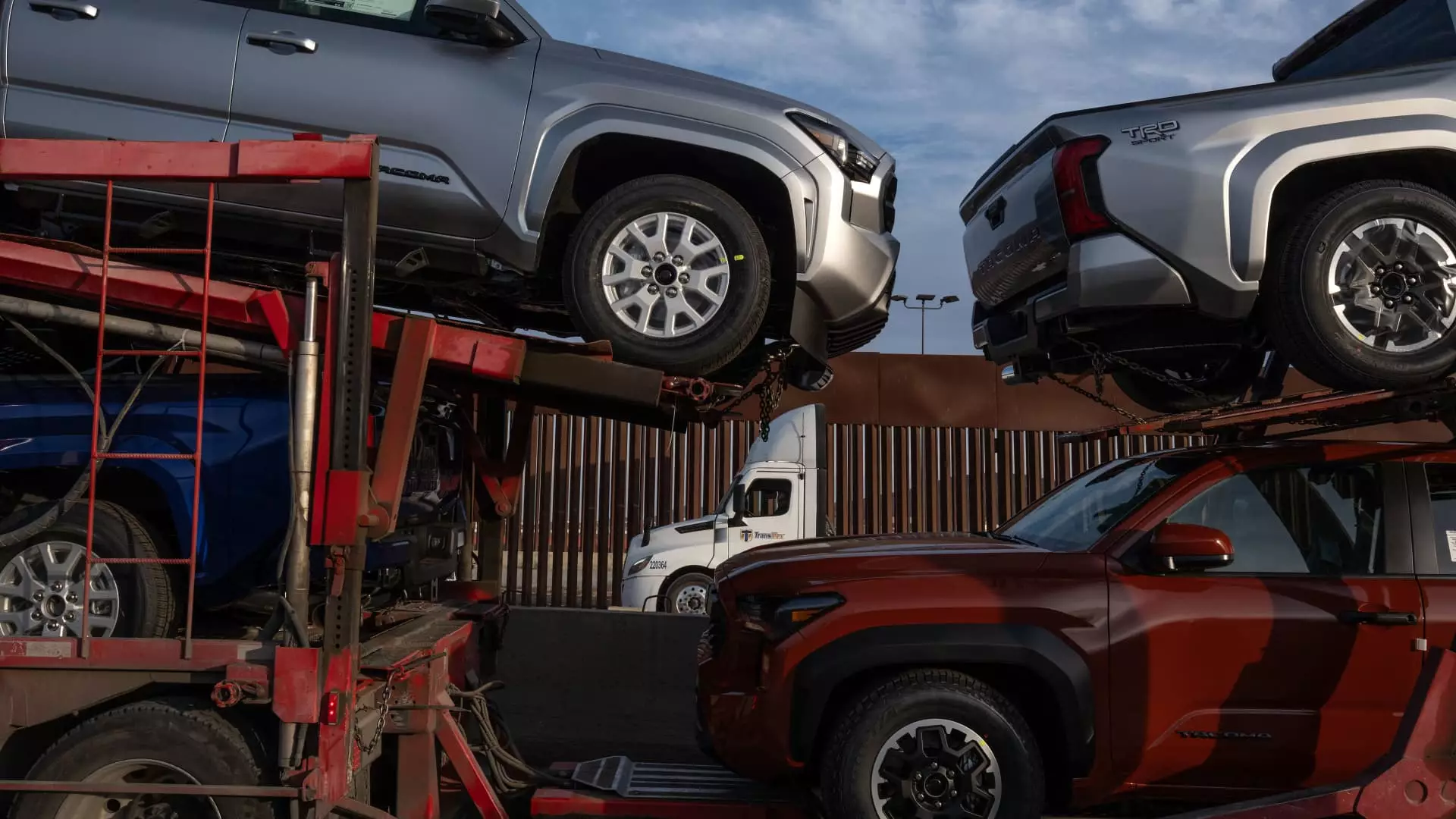In the wake of an ominous warning from President Donald Trump, concerning the imposition of 25% tariffs on imports from Canada and Mexico, the automotive sector is finding itself enveloped in anxiety. This impending financial decision is fueling a maelstrom of speculation and uncertainty within the global automotive sphere. Since the administration’s inauguration, industry leaders have adopted a “wait-and-see” strategy, postponing major decisions as they await further clarification regarding trade policies.
Trump’s timeline suggested a rapid implementation of these tariffs, initially slated to begin on February 1, further exacerbating the already turbulent landscape for automakers. Leading entities in this sector, such as General Motors (GM), are desperate for clarity in order to shape their operational and financial strategies. Tariffs function as a tax on foreign imports, meaning that the burden of these taxes primarily falls on the companies importing goods. There is significant concern that automakers may transfer these costs onto consumers, inevitably driving up vehicle prices and dampening sales.
The threat of tariffs has jolted automaker stock valuations, as evidenced by GM’s notable drop in stock value, which occurred even after surpassing market expectations regarding its earnings guidance. Despite a prosperous forecast for 2025, uncertainty about impending tariffs led analysts, such as Dan Levy from Barclays, to underline the criticality of navigating through fluctuating U.S. policy. GM’s Chief Financial Officer, Paul Jacobson, has taken a notably cautious stance, refraining from including potential tariffs in the company’s financial guidance—an indication of the unpredictable landscape the automotive giant is confronting.
Jacobson pointed out the noise surrounding recent events, including both the political climate and natural disasters, indicating a desire for more stable indicators before finalizing strategic plans. The automotive industry, inherently interconnected across borders, faces unique challenges that could ultimately hinder earnings, particularly for prominent players like GM, which maintains a significant manufacturing footprint in North America.
The Far-Reaching Effects of Tariffs
The potential implementation of tariffs creates far-reaching implications for the automotive industry as a whole. S&P Global Mobility has suggested that these tariffs would impact virtually every automaker and supplier operating on the continent. Many automotive manufacturers maintain extensive factories in the U.S., yet heavily depend on components produced in Mexico, further demonstrating the complex interplay between North American economies.
The statistics paint a compelling picture: Mexico imports approximately 49.4% of its automotive parts from the U.S., which it then reprocesses to export 86.9% back to U.S. markets, according to the International Trade Administration. The flow of parts and vehicles between these countries is not just a mere transaction; it’s an intricate ballet that underscores the delicate balance of trade relations. Wells Fargo’s analysis indicates that tariffs across the board could cost traditional Detroit automakers billions annually—an alarming prospect that could fundamentally shake the industry.
An analysis by S&P Global Mobility indicates that the financial strain resulting from tariffs could be significant. For instance, a simple 25% duty on a vehicle that costs $25,000 could result in an added burden of around $6,250—costs that are likely to find their way to consumers if implemented. With approximately 5.3 million vehicles produced in North America for the U.S. market, nearly 70% of them stem from Canadian and Mexican production—underscoring the gravity of the situation.
Automakers with significant operations in Mexico, such as Ford, GM, and Toyota, stand to feel the sharpest pangs of this policy. Notably, companies like Volkswagen and Nissan, with a high percentage of their U.S. sales emanating from Mexico, may face the steepest repercussions if these tariff policies come to fruition.
As the automotive industry grapples with these looming trade policies, executives are compelled to strategize carefully. The varying degrees of exposure each automaker has to potential tariffs underscores the need for bespoke strategies tailored to individual corporate circumstances. Antonio Filosa, a prominent figure within Stellantis’ North American operations, recognizes this reality, noting that determining the best course of action hinges upon the decisions from Washington.
In the end, the ongoing uncertainty surrounding tariffs poses a formidable challenge for the automotive industry. As stakeholders await clarity, the ripple effects of these potential trade barriers could reshape the landscape of American automotive manufacturing. The stakes are high not only for the automakers but also for consumers who will feel the effects at the dealer’s lot, potentially altering the very dynamics of the industry itself.

